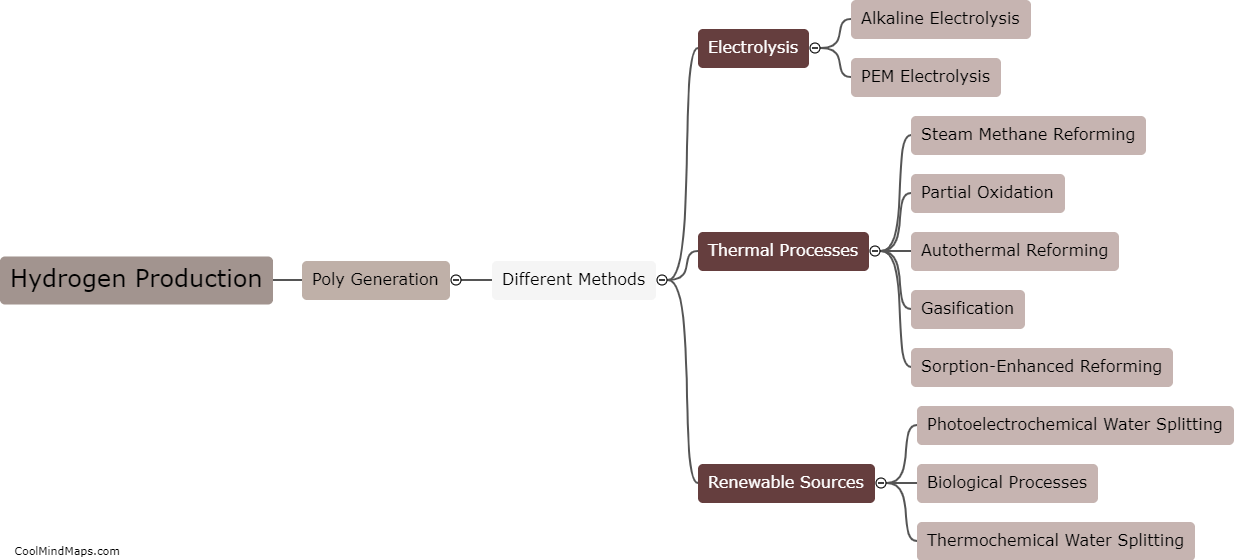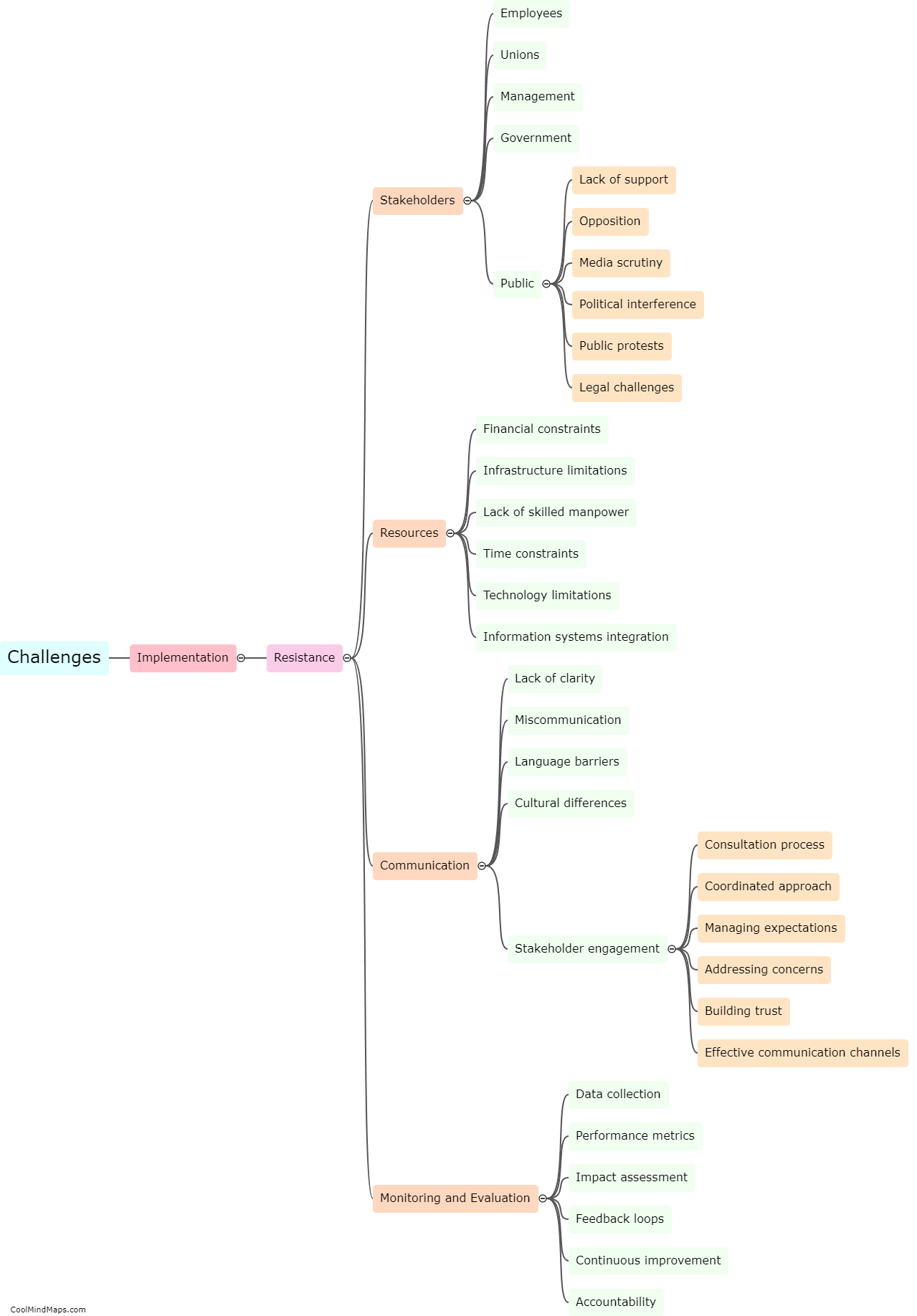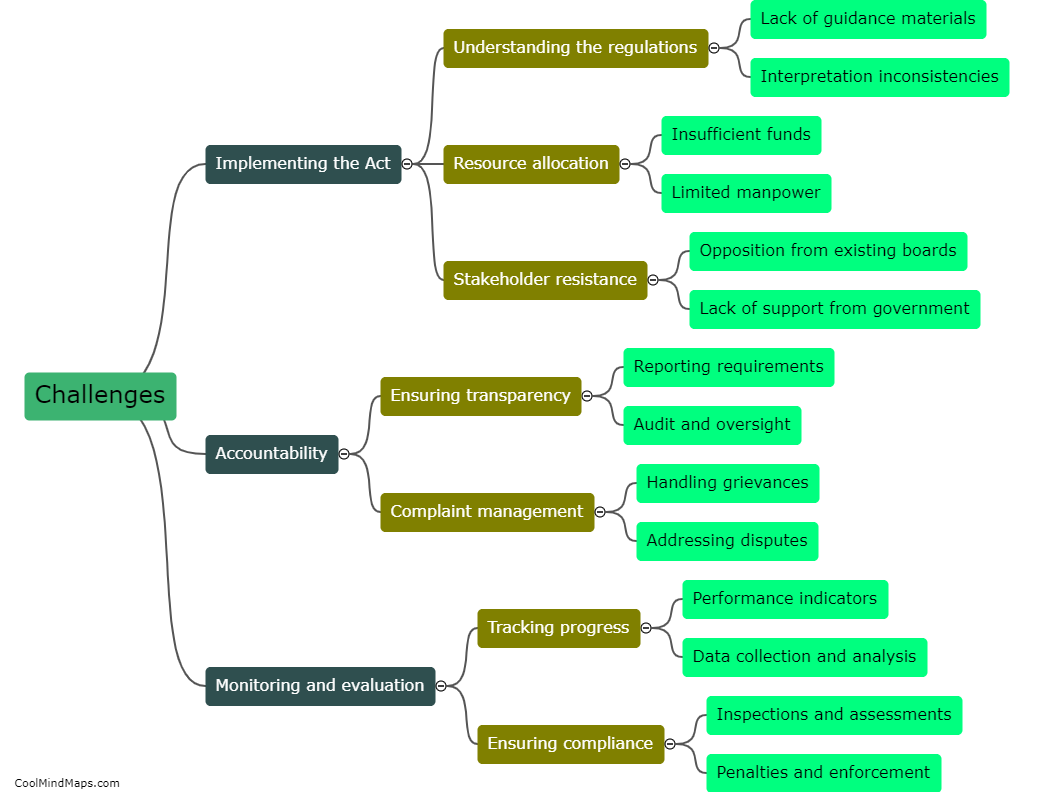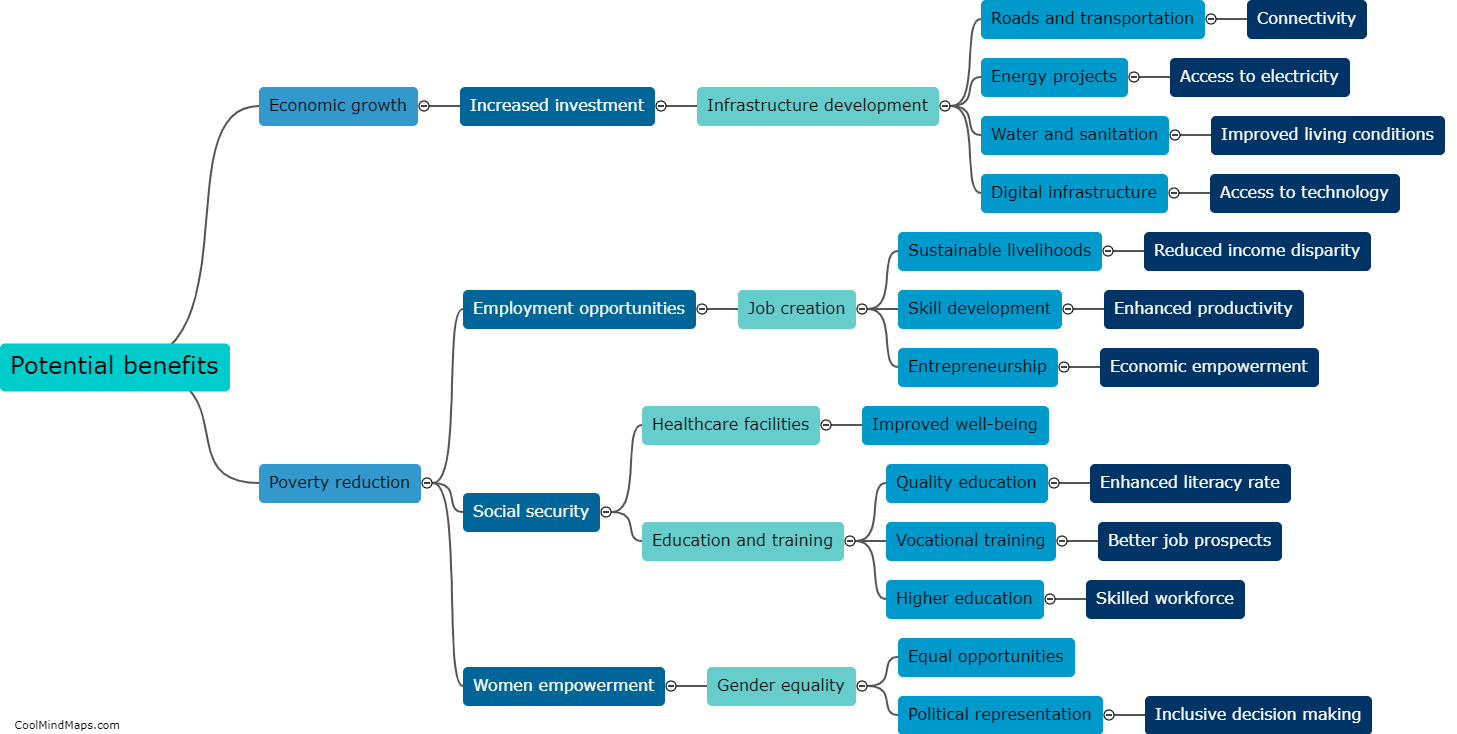What are the weaknesses of the Development Board Act 2013?
The Development Board Act 2013, enacted with the aim of promoting economic growth and development in specific regions, has certain weaknesses that hinder its effectiveness. One key weakness is the lack of proper accountability and transparency mechanisms. The act does not clearly outline the process for monitoring and evaluating the development projects undertaken by the board, leading to potential mismanagement of funds and resources. Additionally, the act lacks specific criteria and guidelines for selecting board members, which may result in the appointment of individuals who lack the necessary expertise and experience. Furthermore, the act does not adequately address the issue of coordination and collaboration with other government departments and agencies, potentially limiting the effectiveness of the board's initiatives. Overall, these weaknesses in the Development Board Act 2013 need to be addressed to ensure its objectives are effectively achieved.
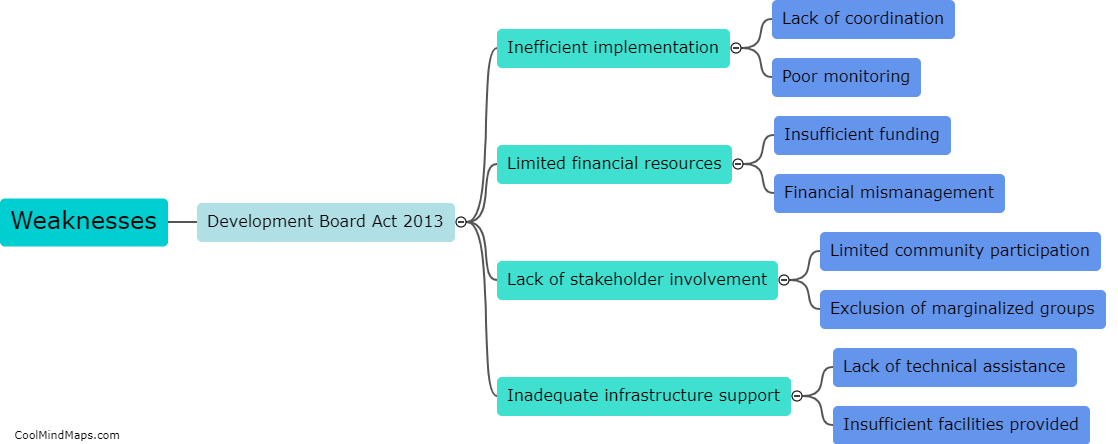
This mind map was published on 26 November 2023 and has been viewed 96 times.

